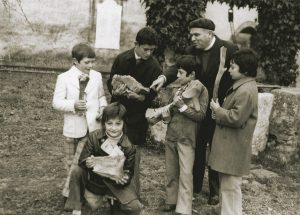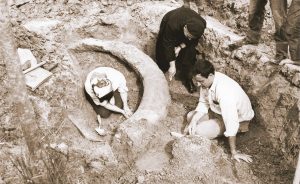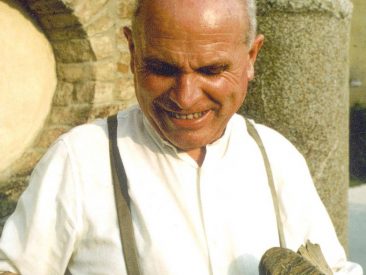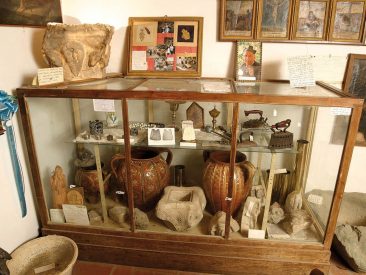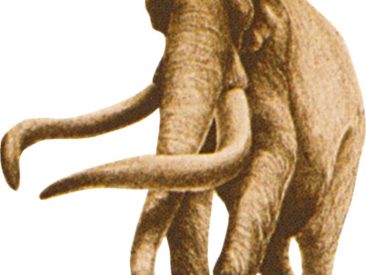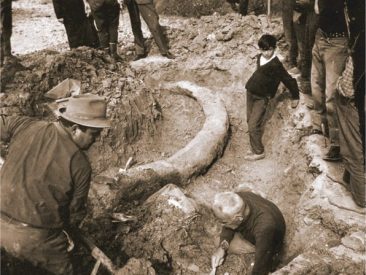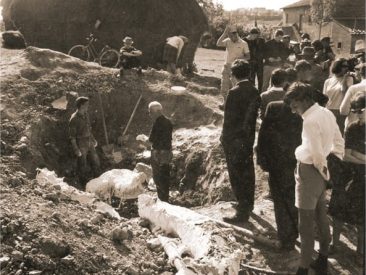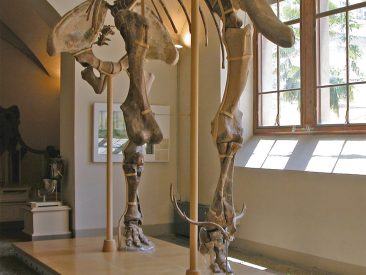Paleontological Route
The Paleontological Route is a ring that starts from the Abbey of Farneta, passes through the village and the Museum of Don Sante and leaves the asphalted road passing through a field. At the end of this field a path leads to La Villa and back to the Abbey of Farneta. The route is integrated with signs and didactic panels. Tourists are guided through the places where many fossils have been found.
- Paleontological Route “Don Sante Felici” Distance: Km 5 | raveling time: 1 ora | Difficulty: Low
Distance: Km 5
Traveling time: 1 hour
Difficulty: LowRoute description
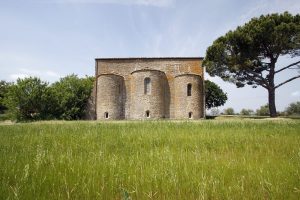
The route starts from the Abbey of Farneta, jewel of Romanesque art, founded by the Benedictine monks between the 9th and the 10th century and dedicated to the Virgin of the Assumption. Today only the church remains of the old huge complex, even if it has been profoundly transformed over the centuries. The present look is mainly due to transformations in the 17th century, which have shortened by 14 meters the original plan and destroyed from the foundations the old quadrangular bell tower, located on the Northern side. The church, with Latin cross plan, is made up of a single nave. Four semicircular apses open in the transept, from which you can enter the crypt, the most interesting part of the church, which has been discovered in 1923. Three niches, covered with cross vaults, open up from each of the three cellars.The first stop is at Cava Bonatta, which has been named after the old but still existing source where Don Sante discovered one premolar of Pachycrouta brevirostris, a big African hyena populating the area from the superior Pliocene (1.8 million years ago). Here some remains of Equus stenonis and of Mammuthus meridionalis vestinus have been also found.
After crossing the fields you arrive at Cava Liberatori, where the famous “Linda” was discovered in 1973: it is a 4.20 m high skeleton of a female Mammuthus meridionalis vestinus, now displayed in the Museum of Natural History in Florence, in the Geology and Paleontology Section. This kind of elephant lived nearly one million years ago in a hot climate, characterized by both savannah and woods. This cave has also given other remains, like the Praemegaceros obscurus, a big deer.
In 1965 a certain number of fossils were found in Case Mercato: bovines, deer of medium-small and big dimensions like the Praemegaceros obscurus, horses and Homotherium crenatidens, a carnivorous feline with big upper canine teeth. We can infer from the geological data that the environment during the superior Pleistocene was characterized by large valleys crossed by rivers, with wide marshlands.
In Poggio il Melo archaeologists have found other remains of Mammuthus meridionalis vestinus, which was named after the cave’s owner, Gianni Schicchi. Two tusks of Mammuthus, later called “Paride” by Don Sante Felici, were found in Mitiano. The last stop is near source La Bozza, where other tusks and part of the skull of a medium-small sized deer, called Pseudodama farnetensis, were found in 1964.
Text taken from “Antichi Orizzonti – Percorsi trekking della campagna cortonese”. For further information on how to buy the guide, e-mail us at contact@cortonaweb.net.
